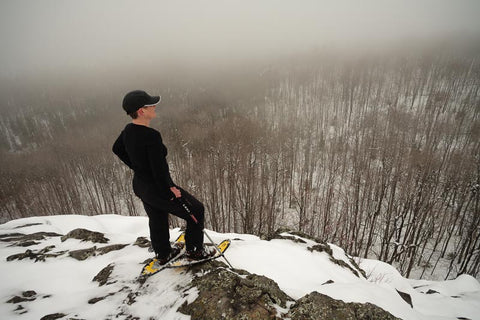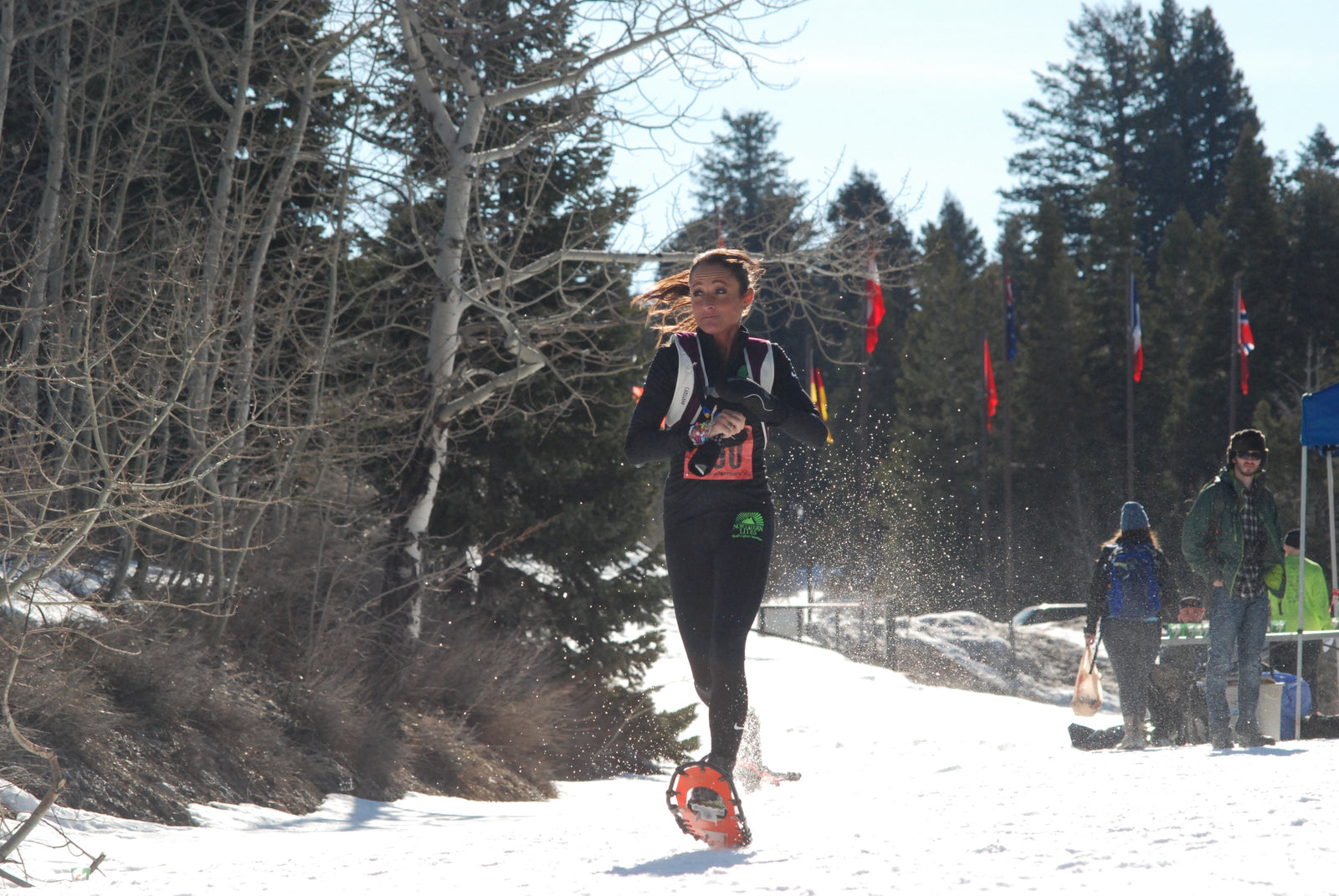Snowshoeing has quickly become one of the fastest growing outdoor activities and over the past 3 decades has become a go-to activity for families and friends alike.
This sport was a necessity for many living in rugged, snowy terrain and the only way to travel through deep snow during the winter months.
Along with the popularity of snowshoeing, technology and innovation has changed and enhanced the design and manufacturing of snowshoes making them more durable and lightweight. This footgear has come a long way since the wooden framed, rawhide-laced versions worn by Inuits and Native Americans.
But, selecting the most viable snowshoe equipment can be a tedious task especially for women due to the various sizes, models, bindings and weights that snowshoes and various snowshoe brands market and sell.
What Are Women’s Snowshoes?
Many women simply want to enjoy some scenic nature trails or look to continue the hobby of recreational walking and/or running well into the winter months --- this is one of the first reasons why women’s snowshoes are manufacturing specially for women.
For them, owning a pair of snowshoes is an essential first step toward being active, and fit.
Nowadays, women’s snowshoes have certainly progressed from the early days of wood and rawhide. They are now made of high-end textiles, plastic, and metal with various techniques to attach to women’s feet.
Snowshoes for women are created to be smaller, providing arch support and smaller strides.
What Are The Differences Between Men’s and Women’s Snowshoes?
There are 3 major differences between men’s and women’s snowshoes:
- Snowshoes for women are usually shorter because of the user’s average weight.
- In general, women’s snowshoes are designed to be smaller to match their gait and stride.
- The bindings are designed to fit boots of smaller sizes.
Types of Women’s Snowshoes
One of the important aspects of snowshoes is good flotation, which prevents hikers and snowshoers from tiring out prematurely from constantly having to pull heavy snowshoes our of deep pow pow (snow).
Quality snowshoes will have a good hinge that pivots correctly to prevent the tail of the snowshoe from lifting. This leads to good constant flotation with steady steps that maximize floatation with each and every step.
You also want to be able to have good control of your snowshoes. With any of the quality snowshoes on the market, this should never be an issue.
Flat Terrain/Trail Walking
Women’s snowshoes for trail or flat terrain are the most common pair and are perfect for beginners in snowshoeing.
These snowshoes are best used for strictly staying on trails that are snow-packed or on moderately rolling terrain. These snowshoes have the most basic bindings, have minimal aggressive traction, and quite easy to walk in. Check out the best snowshoes for women who are looking for snowshoes for trail walking here.
Rolling Variable Terrain/Day Hiking
Rolling terrain women’s snowshoes work well for backpacking, hiking, and exploring outside the packed trail. These snowshoe models are designed with semi-aggressive crampons.

These types of snowshoes work quite well for everything, except in terrains that are icy and very steep.
Women’s snowshoes for rolling terrain are designed with well-built bindings and Expect them to come equipped with super light frame and often longer sharper crampons to provide traction on side hills and steeper inclines. Check out our recommendation for day hiking snowshoes for women here.
Steep, Mountainous Terrain
If you plan on going to the backcountry, then you'll need a pair of snowshoes that are quite sturdy. In general, mountain snowshoes have the most solid bindings and crampons.

That said, these snowshoes are designed to serve very well on steep ascents and icy slopes. Many of these shoes include heel lifts to help with climbing up hills: a key feature that makes a big difference when it comes to expending energy when climbing.
Women’s Frames & Decking
Frame
Frames for women’s snowshoes have advanced from oval-shaped wood footgear to modern, practical designs made from composite plastic and thin metal.
In snowshoes, the frame’s surface area and shape are indicators of how well you will be able to float in deep snow.
All in all, better flotation can be achieved as long as the frame (which is oval) is well-shaped.
Normal gait and easy traverse in the snow are possible too, thanks to smaller tapered frames, which make an ideal pair of exceptional snowshoes.
On the other hand, women’s snowshoe frames have a more distinct taper to help narrower strides, and such frames for running and racing are designed for a worry-free, quick gait. To get a good speed, a pair of narrower designed snowshoes with a tapered tail is recommended.
For beginners or just want to hike in deep snow, check out oval-shaped snowshoes or with a wider tail.
Some of these models also provide add-on flotation tails for an increased length of your shoe.
Decking
Back then, rawhide was the material used for the decking. It is the stuff that extends between the frame to hold it all together. Folks who were into snowshoes used the decking to weave panels that looked clearly similar to a tennis racket.
Today, snowshoe decking is made with solid panels. At first, people had the idea that it won’t serve its purpose as they believed that the holes were fully responsible for keeping the snow from accumulating top of the shoe.
But, it was quite the opposite. A snowshoe with modern, solid decking, in fact, proved to be very efficient in clearing away snow.
A snowshoe decking is built from various robust materials such as:
- A composite material like polyurethane coated with nylon
- Synthetic rubbers and leathers
- Neoprene
- Polyurethane
- Plastic

The materials are cold-resistant and extremely solid and require little maintenance, compared to rawhide and other early materials required in the early form of snowshoes.
Bindings For Women
Some snowshoe models are created for feet with smaller sizes and the binding helps keep the feet in place.
But, it is with the bindings that are generally able to hold several kinds of footwear and foot sizes. When selecting a pair, it helps to thoroughly check the bindings. For women with small foot size or just planning on wearing basic shoes, check the binding for its flexibility from all angles.
If, on the other hand, you are up for wearing shoes of a bigger and wider size, make sure the bindings can fully hold the shoes in place and are flexible enough.
Toe caps may be secure but can give you issues with footwear of both small and big sizes. To get a better fitting, list down the height, width, and length of your boot before buying snowshoes.
Snowshoe Bindings
For the most part, snowshoe bindings are made to hold and endure both winter and hiking boots, which will require extra length for a better attachment.
Bindings for your snowshoes, of course, should be according to your personal taste and style from which you can select --- ranging from ratchet closures, straps, and buckles.
Below are the 2 main types of bindings:
- Floating bindings: Fasten to the frame with durable webbing. These bindings are tensioned which causes the snowshoe tail to lift with every stride which means efficiency, but also tends to bits of snow flinging on the back of your legs.
- Hinged bindings: Fasten to the deck turning a little close to the ball of your foot. Hinged bindings are excellent in climbing over trees, or kicking steps in deep snow. The trail drags, however, are not as smooth as other models which can be difficult for backward movement.
Additional Snowshoeing Gears for Women
Even the tiniest, simplest detail matters a lot to fully enjoy snowshoeing. On a winter adventure with snowshoes, having the right accessories or equipment is essential.
Trekking Poles
Trekking poles can help in maintaining balance and stability while snowshoeing. They work best with side-hill areas, descents with snow powders, and steep ascents.
Trekking poles with large baskets are recommended, as they won’t sink into the snow.
Snowshoe Tails
Snowshoe tails, or tail extensions, provide more flotation and more surface area. Tails are helpful if you are snowshoeing in a variety of snow conditions in the same snowshoe trip.
Heel Lifts
Heel lifts are small wirings that help rest your heel on and lift your feet up and are common in mountain snowshoe models.
Heel lifts were invented to give your calves get a break as you rest your heel on the lift during long hikes. These lifts are a great help with traction as well as they force the back of the snowshoe down on steep terrain.
Regardless of what snowshoe activity you are engaging in, the best way to get started is to simply get started. If you are into winter outdoor adventures, chances are you are either into snowshoeing or have given it some serious thought.
Snowshoeing is a great way to get outside and enjoy the outdoors during winter. If you are new to snowshoeing, you want to be sure you purchase the right equipment the first time around so that your first time out is as enjoyable as possible. Remember that weight is pivotal and the lighter the snowshoe the further you can go and the more enjoyable it’ll be.
Checkout Northern Lites snowshoes specifically crafted for women here.



